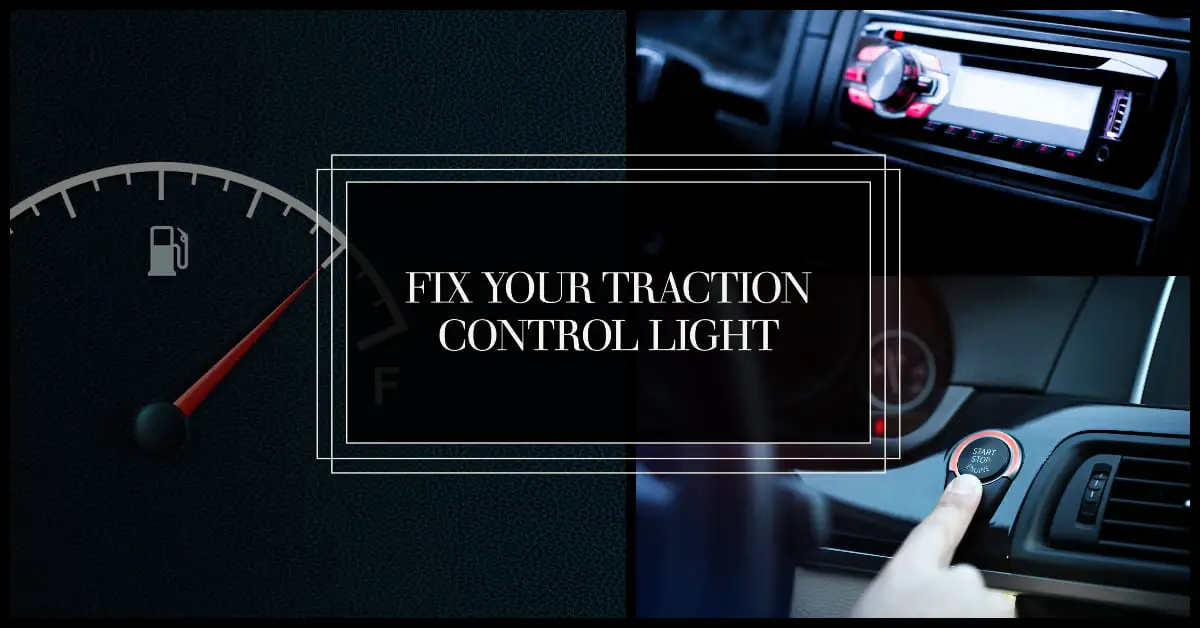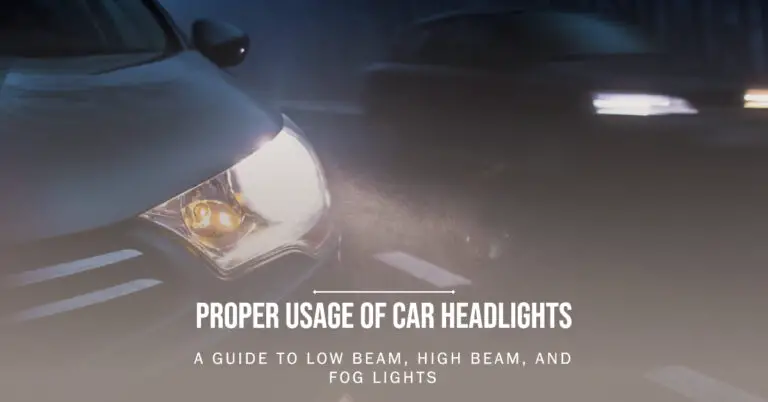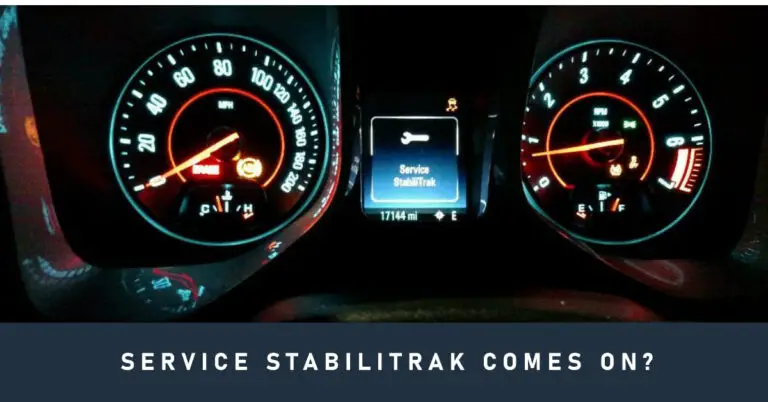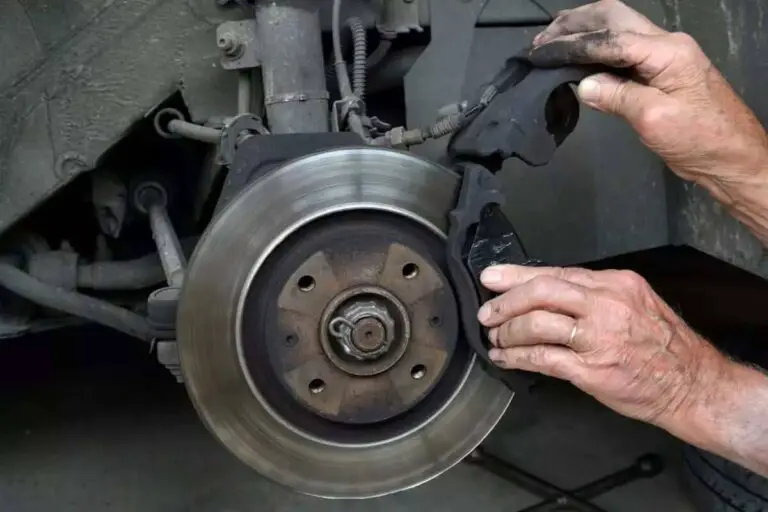Traction Control Light Turning On? Here’s a Simple Fix

The traction control system in a vehicle is a crucial safety feature designed to prevent the wheels from losing traction while driving. When the system detects that a wheel is about to lose traction, it intervenes by reducing engine power to the wheel, which helps the car maintain traction and stay on the road. However, if the traction control light turns on, it means there is an issue with the system that needs to be addressed.
There are several reasons why the traction control light may turn on, including a malfunctioning wheel sensor, a damaged ABS system, or a problem with the vehicle’s computer. While this can be a cause for concern, there are simple fixes that can be done to address the issue. By following a few simple steps, drivers can reset the traction control system and get back on the road safely.
Table of Contents
What is Traction Control Light?
Traction control is a safety feature in modern cars that helps prevent loss of control and skidding by limiting wheel spin during acceleration. The traction control system (TCS) uses sensors to monitor the speed of each wheel and adjusts engine power and braking force to maintain traction and stability. The traction control light is a warning light on the dashboard that indicates a problem with the TCS.
How does Traction Control System work?
The TCS uses wheel speed sensors to detect when a wheel is slipping or losing traction. When the system detects this, it intervenes by reducing engine power to the wheel. This helps the car to maintain traction and stay on the road. The TCS also works in conjunction with the anti-lock braking system (ABS), which prevents the wheels from locking up during hard braking.
What causes Traction Control Light to turn on?
If you see the traction control light on your dashboard, it means there is an issue with the TCS. There are several reasons why the light may turn on, including:
- Bad wheel speed sensors
- Malfunctioning ABS control module
- Low battery voltage
- Blown fuse
- Wiring issues
- Low brake fluid
- Bad steering angle sensor
If the TCS is disabled, the car may still be drivable, but it may be more difficult to control in slippery conditions. It’s important to have the TCS checked by a mechanic as soon as possible to avoid potential safety hazards.
Simple Fixes for Traction Control Light Turning On
If you see the traction control light turning on while driving, it can be a sign of a problem with your car’s traction control system. However, there are some simple fixes you can try before taking your car to a mechanic. In this section, we will discuss some of the most common reasons for the traction control light turning on and how to fix them.
1. Check the Traction Control Button
The first thing to check is the traction control button. Make sure that it is not accidentally turned off. If it is off, turn it on and see if the traction control light turns off. If the button is on and the light is still on, move on to the next step.
2. Check the Brake Pedal Sensor
The brake pedal sensor is an important component of the traction control system. If it is malfunctioning, it can cause the traction control light to turn on. Check the sensor to see if it is working properly. If it is not, replace it.
3. Check the ABS Sensor
The ABS sensor is another component of the traction control system. If it is malfunctioning, it can cause the traction control light to turn on. Check the sensor to see if it is working properly. If it is not, replace it.
4. Check the Wheel Speed Sensor
The wheel speed sensor is responsible for detecting the speed of each wheel. If it is malfunctioning, it can cause the traction control light to turn on. Check the sensor to see if it is working properly. If it is not, replace it.
5. Check the Traction Control Module
The traction control module is the brain of the traction control system. If it is malfunctioning, it can cause the traction control light to turn on. Check the module to see if it is working properly. If it is not, replace it.
When to Seek Professional Help?
While there are simple fixes that can be done to address a Traction Control Light turning on, there are instances when it is best to seek professional help. Here are some scenarios that warrant a visit to your trusted mechanic:
- Persistent Traction Control Light. If the Traction Control Light keeps turning on even after you have tried the simple fixes, it may indicate a more serious problem that requires professional attention. A mechanic can use diagnostic tools to identify the root cause of the issue and provide the necessary repairs.
- Unusual Noises or Vibrations. If you notice odd noises or vibrations while driving, it could be a sign of a more severe problem with your car’s traction control system. A mechanic can perform a thorough inspection to determine the cause of the issue and address it accordingly.
- Lack of Knowledge or Experience. If you are unsure about how to fix the problem or lack the necessary experience to do so, it is best to leave it to the professionals. Attempting to fix the issue without the proper knowledge and tools can lead to further damage to your car or even pose a safety risk.
Keep in mind that ignoring a persistent Traction Control Light can lead to more severe problems down the road. It is always best to have it checked by a professional to ensure your safety and avoid costly repairs in the future.
Conclusion
In conclusion, if the traction control light turns on, it is important to address the issue as soon as possible. Ignoring the warning light could lead to more serious problems down the road. By following the steps outlined in this article, drivers can identify and fix the issue in a simple and cost-effective manner.
It is important to note that the causes of the traction control light turning on can vary, and it may be necessary to consult a mechanic or dealership for further assistance. However, in many cases, the issue can be resolved by checking and replacing the relevant components, such as the ABS wheel speed sensor or the steering angle sensor.
By maintaining a regular maintenance schedule and being proactive in addressing warning lights, drivers can ensure the safety and longevity of their vehicles. With the information provided in this article, drivers can confidently handle the issue of the traction control light turning on and get back on the road with peace of mind.
FAQs
Can I drive with the traction control light on?
Yes, you can still drive with the traction control light on. However, it is important to note that the traction control system is not functioning properly, which means that you may experience reduced traction and stability while driving. It is recommended to get the issue fixed as soon as possible.
How do I know if my traction control system is working properly?
You can test the traction control system by driving on a slippery surface and seeing if the system kicks in to prevent wheel spin. Additionally, you can check the owner’s manual to see if there are any self-diagnostic tests that you can perform.
What is the difference between traction control and stability control?
Traction control helps prevent wheel spin when accelerating, while stability control helps prevent skidding and loss of control during cornering. Some vehicles have both systems, while others only have one.
Can I turn off the traction control system?
In most vehicles, you can turn off the traction control system by pressing a button on the dashboard. However, it is not recommended to turn off the system unless you are driving in a situation where wheel spin is necessary, such as when trying to get unstuck from snow or mud.
How much does it cost to fix a traction control system?
The cost to fix a traction control system can vary depending on the cause of the issue. In some cases, it may be a simple fix that can be done at home, while in other cases, it may require a visit to a mechanic. The cost can range from a few dollars for a blown fuse to several hundred dollars or more for a faulty sensor or control module.







